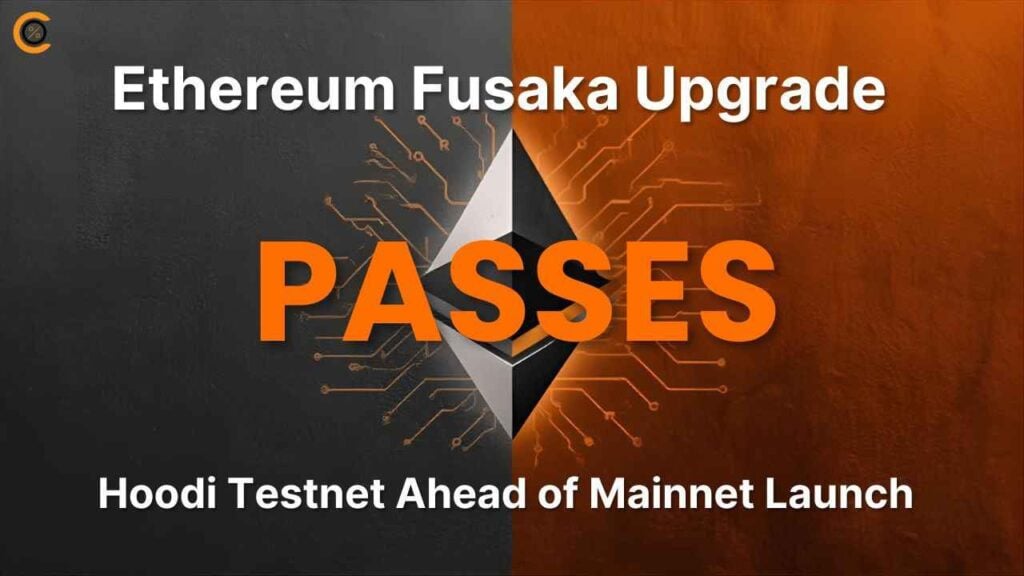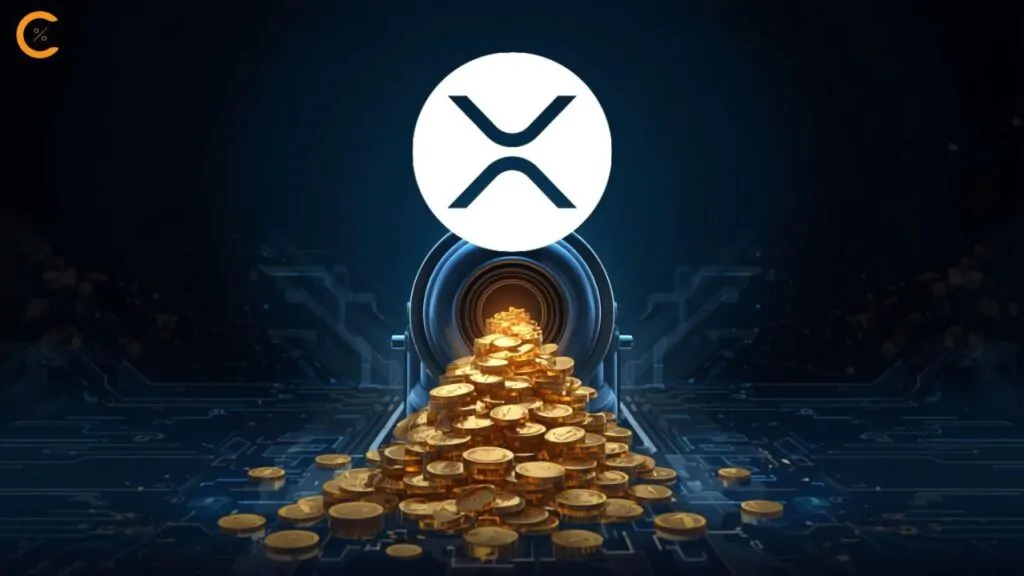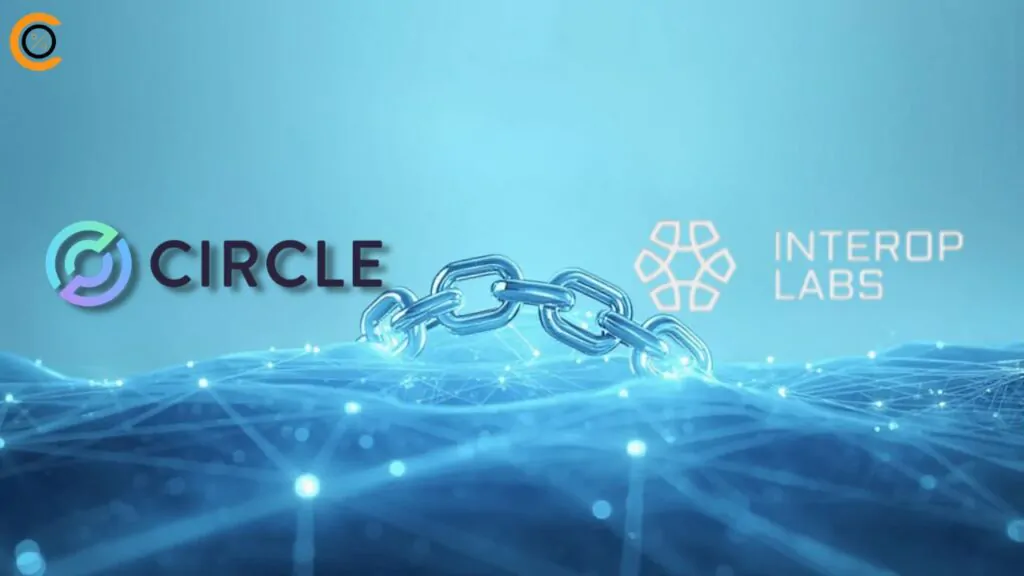• Ethereum’s latest upgrade, Fusaka, passed the third and final testnet on Hoodi.
• The upgrade will go live on the network’s mainnet on December 3.
• Fusaka seeks to improve Ethereum’s scalability, security, and overall performance.
Ethereum’s long-anticipated Fusaka upgrade passed the final testing phase, Hoodi, signaling the start of its final testing phase before the mainnet activation on December 3. Ethereum execution client Nethermind announced in an X post that the Hoodi Fork has been finalized, calling it a significant step toward the upcoming Fusaka upgrade. The upgrade aims to bolster scalability, security, and overall performance, representing a crucial milestone in Ethereum’s ongoing roadmap toward a more robust ecosystem.
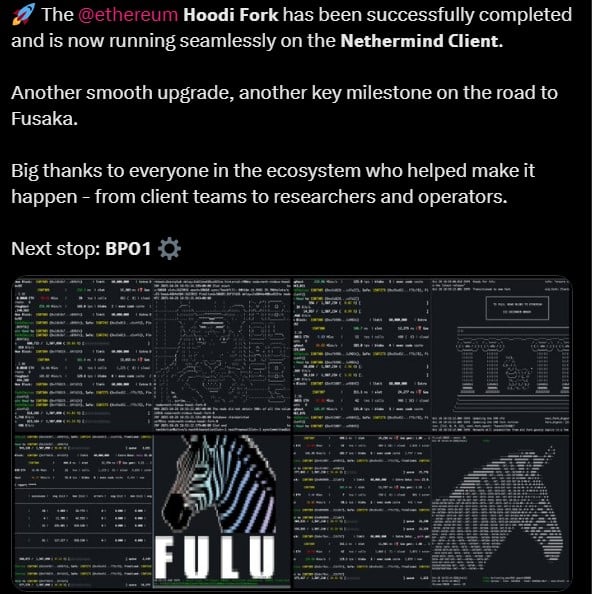
Ethereum’s Fusaka upgrade debuts on Hoodi following earlier test runs on the Sepolia and Holesky networks earlier in the month. Sepolia integrated the update on October 14, while Holesky had been used for preliminary testing beginning October 1 before being retired after a smooth execution. The upgrade builds on the progress of Pectra, Ethereum’s previous major improvement that reached the mainnet in early May.
Understanding Fusaka’s Mainnet Rollout
Fusaka’s mainnet rollout will come in three phases, beginning with the official launch on December 3, followed by a blob capacity increase on December 17, and culminating in a second blob capacity hard fork on January 7, 2026.
According to the Ethereum infrastructure provider Consensys, the client release window opens on November 3, giving node operators 30 days to complete their upgrades ahead of the mainnet activation. The upgrade also introduces several key improvements aimed at boosting network scalability and efficiency.
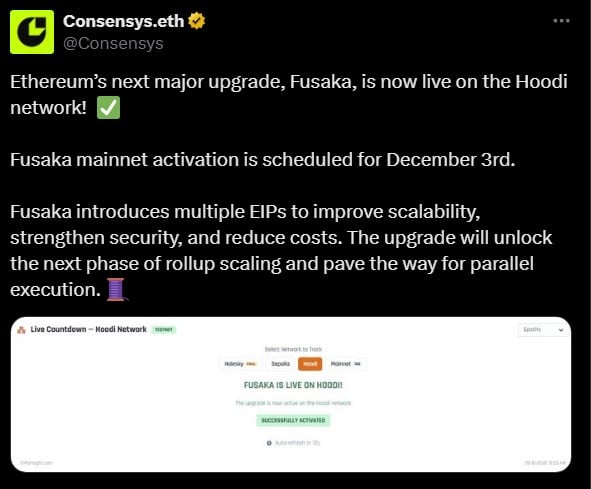
Among them is the Peer Data Availability Sampling (PeerDAS), which allows validators to check small portions of rollup data instead of downloading the entire dataset. PeerDAS significantly improves Layer-2 efficiency and reduces bandwidth requirements across the network.
Additionally, EIP-7825 and EIP-7935 revise gas limit parameters to improve performance and set the foundation for parallel execution, while EIP-7939 and EIP-7951 strengthen zero-knowledge proving capabilities and overall system performance.
With the Fusaka upgrade, developers and Layer-2 teams are expected to gain from lower data costs and improved development tools, while users will likely enjoy faster and more affordable transactions across Layer-2 networks. Meanwhile, node operators are required to upgrade their client software to Fusaka-compatible versions ahead of the activation date.
Ethereum’s Recent Upgrade History
Ethereum has undergone a series of upgrades since its inception, each addressing critical blockchain challenges or introducing new features. The most recent upgrades, Dencun and Pectra, introduced crucial advancements aimed at enhancing Ethereum’s scalability, transaction efficiency, and Layer 2 ecosystem support.
The Dencun upgrade, which launched in 2024, marked a major leap in scalability and cost efficiency. It introduced proto-danksharding (EIP-4844), which uses data blobs to boost transaction throughput and lower gas fees by allowing rollups to store data more effectively.
Dencun also implemented improvements such as EIP-1153 and EIP-5656, enhancing execution efficiency through transient storage and faster data handling.
Building on Dencun, the Pectra upgrade in 2025 helped refine Ethereum’s scalability and Layer 2 interactions. It added Verkle trees for compact data storage, introduced gas-efficient transaction types, and improved validator access to transaction data, further strengthening the network’s performance, security, and decentralization.
Ethereum Price Drops Below $4,000
Despite the progress with its Fusaka upgrade, Ethereum’s price remained stalled, dropping slightly below $4,000 after seeing a brief decline of 3%, according to CoinGecko data.
The top altcoin has slowly recovered from the recent market crash, with spot exchange-traded funds (ETFs) inflows playing a major role in its comeback.


